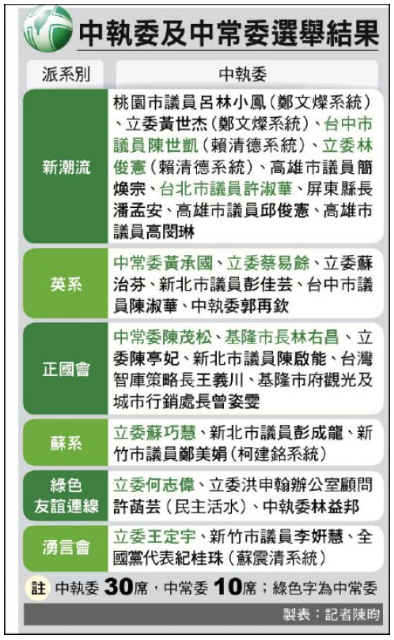Shirley Kan is an independent specialist in Asian security affairs whose service for the US government has included working for Congress at the Congressional Research Service (CRS). She is a founding member of GTI’s Advisory Board.
People in Taiwan might pay less attention to rumors emanating from the American Institute in Taiwan (AIT) chairman’s visit in March and more attention to the US government’s call for Taiwan to implement its Overall Defense Concept for asymmetric advantage. The Congress and Trump Administration have a consensus about arms sales to Taiwan and its military transformation to fortify deterrence. Earning the praise of “Taiwan Model,” Taiwan is gaining international goodwill during the COVID-19 pandemic. Nonetheless, President Tsai Ing-wen’s (蔡英文) failure or success in directing the military determines whether that goodwill has implications for Taiwan’s defense against China’s threats. What are the options?
No Time to Waste
For as long as about a month after the AIT chairman imposed a visit in Taipei in early March 2020, reports talked about his purported opinions and pitch for a billion-dollar sale of Raytheon’s Standard Missiles. Taiwan has no time to waste. Such rumors take up the time of Taiwan’s Ministry of National Defense (MND) that reflexively reacts to reports. Rather than sensational stories, Taiwan should pay attention instead to the US Congress, Administration, and Indo-Pacific Command (INDOPACOM) about Taiwan’s essential military reforms to strengthen deterrence against China’s rising threat.
Indeed, on March 16, the People’s Liberation Army (PLA) Air Force flew J-11 fighters and KJ-500 early warning aircraft southwest of Taiwan in the first nighttime training near the island, according to MND. As Minister of Defense Yen Te-fa (嚴德發) warned, China continues to increase its military threat even as Taiwan deals with the pandemic.
Before the full-blown pandemic, I wrote that it is in Taiwan’s interest for President Tsai to name quickly the national security officials, even ahead of her second term to start on May 20. Since her re-election in January, attention has focused in particular on decisions about leaders in MND. More happened in January. A tragic crash of a Black Hawk helicopter killed the Chief of General Staff (CGS), Air Force General Shen Yi-ming (沈一鳴). Then, Tsai selected Admiral Huang Shu-kuang (黃曙光) to act as the CGS. On April 13, the President presided over a ceremony, where Huang was officially sworn in to be the CGS. Meanwhile, Tsai has tackled the crisis caused by the coronavirus suspected from a virology laboratory in Wuhan and misinformation from China.
The broader question concerns whether Tsai is failing or succeeding to select MND officials with military experience, leadership capability, willingness to engage internationally, and bold personalities for military transformation under the Overall Defense Concept (ODC). English is not needed. MND designed the ODC partly under the command of a previous CGS (Admiral Lee Hsi-min, 李喜明). But beyond any individuals, the crux of the current challenge is whether Tsai can carry out the concept to construct a cost-effective, lethal, and resilient military.
Tsai is proactively, decisively dealing with the health crisis and earning her country the State Department’s praise of “Taiwan Model” in fighting COVID-19. Keeping Taiwan safe from another threat from China, will Tsai focus the same direct attention to Taiwan’s military as its commander-in-chief? Will Tsai personally dedicate more time to lead the military, beyond simply appointing personnel and delegating to subordinates? Senior US officials talked with Tsai before January. With her re-election over, Tsai’s direction can determine whether there is US-Taiwan divergence or convergence in assessing and deterring the PLA’s threat.
An Opportunity Taiwan Cannot Avoid to Waste
A US consensus supports Taiwan’s sufficient self-defense and asymmetric warfighting to improve military readiness, survivability, and deterrence against China’s threat. The consolidated consensus is held at the Congress, Trump Administration, and INDOPACOM. Will Taiwan apply or waste this opportunity of bipartisan, staunch support?
I have written that Congress has passed laws, including the National Defense Authorization Acts (NDAA), to assert its oversight and policy-making under the Taiwan Relations Act (TRA) (P.L. 96-8). Taiwan has tended to cite such legislation as signals of US support. Congress has called on the Administration to approve closer military-to-military (mil-to-mil) exchanges with and regular arms sales to Taiwan, as they suffered presidential delays in notifications to Congress.
However, Taiwan has stressed only some of the story. Significantly, Congress has placed priority on Taiwan’s choices concerning asymmetric capability and reserve fighters.
In 2016, Congress adopted one provision on Taiwan’s defense in the FY2017 NDAA (P.L. 114-328). The law expressed a “sense of Congress,” counseling that the defense secretary should (not shall) improve US-Taiwan mil-to-mil exchanges at senior levels. Still, the conference report requested that the secretaries of defense and state brief Congress on arms sales to Taiwan by September 1, 2017. The report also stressed the importance of regular transfers of defense articles and services; Taiwan’s innovative and asymmetric capabilities (including undersea warfare); Taiwan’s effective air defense with a balance of fighters and mobile air defense systems; and Taiwan’s participation in bilateral training with the US military.
The FY2018 NDAA (P.L. 115-91) included compromise language about a “sense of Congress.” It recommended a stronger partnership with Taiwan, regular arms sales, Taiwan’s participation in air and naval exercises, senior-level mil-to-mil exchanges, expanded training for Taiwan’s military, and consideration of the advisability and feasibility of US naval port calls to Taiwan (rather than the Senate’s proposed directive to re-establish such naval port calls). Most consequentially, the NDAA for FY2018 included a mandatory, yet noncontroversial, provision to normalize the arms sales process by requiring reports and briefings from the defense secretary. The NDAA did not include a provision on Taiwan’s undersea warfare capability.
Congress passed the FY2019 NDAA (P.L. 115-232) with a section on “strengthening Taiwan’s force readiness.” The legislation required that the secretary of defense shall conduct a comprehensive assessment of Taiwan’s military, particularly the reserves. This legislation reinforced the Defense Department’s focus on Taiwan’s requirement to reform its reserves as an effective fighting force. A study, sponsored by the Pentagon and published in 2017 by the RAND Corporation, found Taiwan’s training for its reserve force to be “insufficient to meet the challenges posed by the increasing threat from the PLA.”
There was more. The NDAA for FY2019 also included a “sense of Congress on Taiwan” that, inter alia, called for US arms sales with emphasis on asymmetric warfare and undersea warfare, as well as predictability of arms sales with timely review and response.
In 2019, Congress passed the FY2020 NDAA (P.L. 116-92). Concerning Taiwan, the law required the Pentagon’s reports on subjects that included: cybersecurity, the TRA, National Security Strategy, National Defense Strategy, senior-level exchanges, and regular transfers of US defense articles that are mobile, survivable, and cost effective to most effectively deter attacks and support Taiwan’s asymmetric defense strategy. The NDAA also included a “sense of Congress” on enhancement of bilateral exchanges for defense.
One Fight that Taiwan Cannot Afford to Lose
Congressional expectations about Taiwan’s transformation complement the Administration’s messages. The Defense Department and National Security Council (NSC) emphasize that Taiwan is not alone in needing to build its military into a distributed, maneuverable, and decentralized force to survive and counter the PLA’s missile, air, and naval attacks. Moreover, INDOPACOM adapts its forces to be agile and distributed. According to its new “Force Design 2030,” the US Marine Corps is transforming with the US Navy and stressing “Stand-In Forces” for “technically disruptive, tactical stand-in engagements that confront aggressor naval forces with an array of low signature, affordable, and risk-worthy platforms and payloads.”
This outlook is found in the Administration’s speech delivered by Principal Deputy Assistant Secretary of Defense David Helvey at the US-Taiwan defense industry conference in October 2019. He cautioned Taiwan that it cannot afford to overlook preparation for the one fight that it cannot afford to lose. Helvey warned that “if the Overall Defense Concept is to remain Taiwan’s guiding framework […], much remains to be done to ensure Taiwan strikes this balance [between capabilities in peacetime and wartime] by fielding a combat credible force proficient in asymmetric warfare, force preservation, and littoral battle.” He expressed Washington’s earnest expectation for the ODC’s implementation, adding that “the Department and our interagency counterparts are eager to see further progress on these fronts.”
Not Wasting the Goodwill of the “Taiwan Model”
Now, Taiwan is earning the compliment of “Taiwan Model” and garnering greater goodwill in the United States and other countries. The question is how to avoid wasting the goodwill’s potential and to sustain that support for Taiwan’s self-defense. First, Taiwan’s resilient, lethal, and cost-effective deterrent would avoid a fait accompli by China to annex the island. Second, foreign countries have more resolve to assist if assured that Taiwan does not face a hopeless fate and has the operational capability to deter and deny the PLA’s attack. Third, Taiwan can assure that its joint forces will survive (for more than one week) until getting foreign assistance. Fourth, Taiwan’s credibility depends upon whether it implements the ODC in alignment with the assessments across the US Executive and Legislative Branches, military, and intelligence agencies. Fifth, Taiwan’s military credibility counters China’s political warfare in peacetime, even without conflict. Finally, President Tsai’s direct decision-making determines how effectively and urgently the MND reforms the reserve and active forces.
As legislation urged for years, the once-broken arms sales process is repaired with normalized notifications to Congress. The Administration sends general/flag officers to visit Taiwan for substantive dialogues. What are other options, if Taiwan transforms its military? I have raised an issue of whether to foster military interoperability, speaking at GTI’s symposium in 2019. This step would be consistent with an objective of the INDOPACOM to strengthen allies and partners in shared strategic competition with China. More options include enhancing mil-to-mil cooperation concerning: special operations forces (SOF); political warfare; US National Guards; official tabletop exercises and analyses specifically with MND (which is more insular than Taiwan’s NSC); and mutual observation or participation in military exercises such as RIMPAC 2020 (if it will still be held this summer after the pandemic). Washington could consider a formal visit by Taiwan’s minister of defense, although Taipei has remained reluctant.
The main point: Taiwan has no time to waste. President Tsai’s direct decision-making over the military can ensure that the “Taiwan Model” extends foreign goodwill to Taiwan’s defense.



